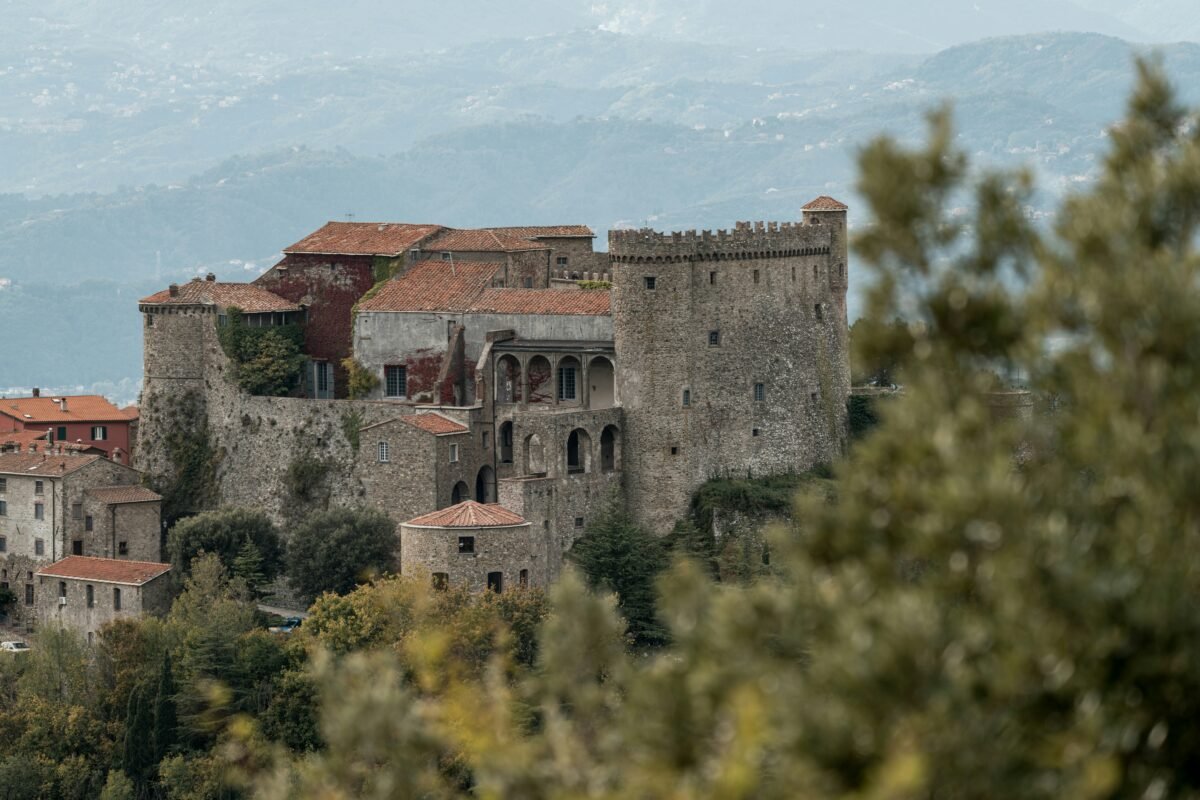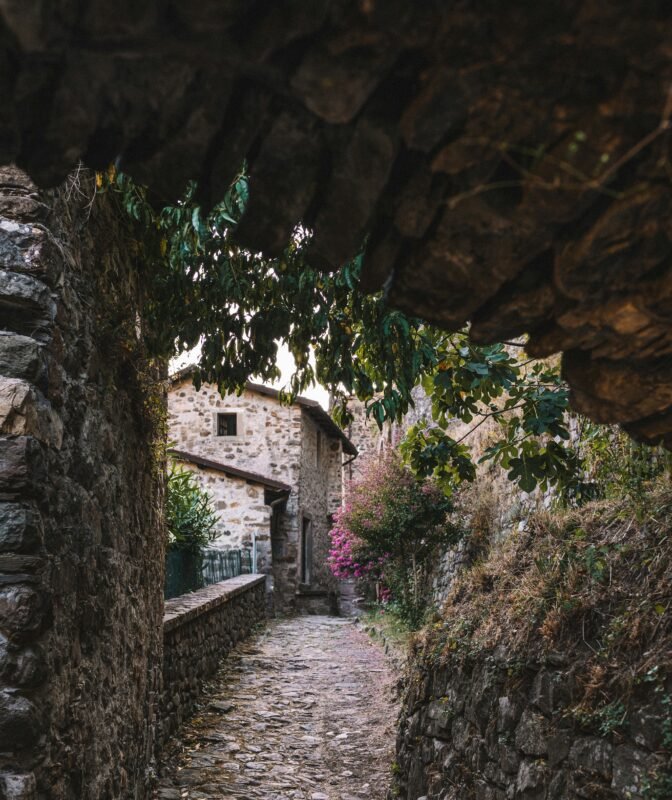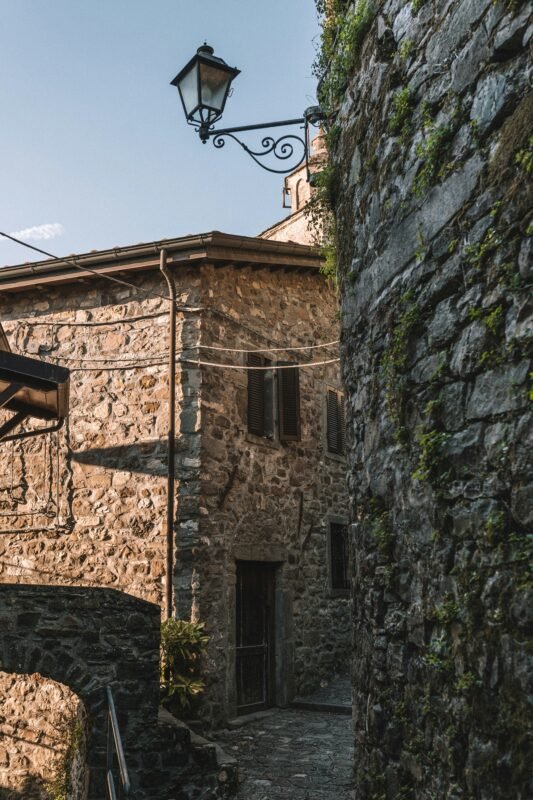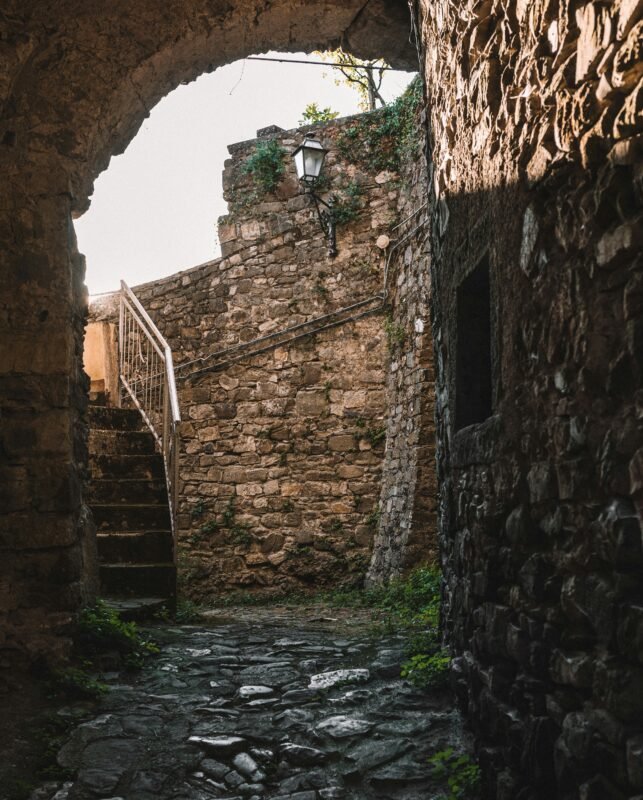Introduction
Nestled between rolling hills and ancient trails, this lesser-known corner of Italy feels like stepping into a storybook. Once a Roman stronghold and medieval crossroads, the area’s layered past whispers through crumbling castles and sunlit olive groves. Its strategic location shaped empires, drawing pilgrims along the Via Francigena and warriors seeking control of its rugged terrain.
Today, the region wears its dual identity proudly. Mountain trails wind past chestnut forests, while family-run trattorias serve testaroli—a pasta older than Rome itself. Artisans craft cheese and honey using methods unchanged for centuries, blending flavors as bold as the landscape. The mix of Ligurian and Tuscan influences creates a cultural mosaic visible in everything from architecture to dialects.
Visitors here don’t just sightsee—they time travel. Walk cobblestone streets where knights once clashed, then savor a meal under the same stars that guided medieval travelers. Every hillside vineyard and weathered stone tower tells tales of resilience and reinvention.
Key Takeaways
- Discover a hidden gem where Roman ruins meet medieval charm
- Follow ancient pilgrimage routes through untouched wilderness
- Taste unique dishes preserved through generations
- Experience a cultural blend of two iconic Italian regions
- Explore castles and villages frozen in time
Discovering Lunigiana, Tuscany: An Introduction
A land shaped by centuries of journeys, where every road whispers tales of the past. Wedged between the jagged Apennines and the Mediterranean’s golden coast, this region served as a vital corridor during the middle ages. Pilgrims trudged along the Via Francigena, their footsteps etching stories into stone-paved roads that still wind through chestnut forests today.
What Makes This Region Unique
Villages cling to hillsides like time capsules, their cobblestone streets unchanged since traders hauled goods between Florence and Genoa. Unlike crowded tourist places, life here moves to the rhythm of harvest festivals and blacksmiths hammering iron. Families still bake bread in communal ovens, while shepherds guide flocks along ancient trails.
Geographical Overview and Rich Heritage
The landscape shifts dramatically within a single day’s drive—rocky gorges give way to olive groves, then vineyards sloping toward the sea. Strategic roads from the middle ages now offer hikers panoramic views of terracotta rooftops nestled in valleys. To visit is to walk through living history: 14th-century watchtowers guard hamlets where neighbors greet each other in a dialect blending Tuscan and Ligurian roots.
Travelers seeking authenticity will find it in slow-paced life here. Morning markets burst with foraged mushrooms, while twilight transforms castle ruins into silhouettes against fiery sunsets. This crossroads of cultures invites you to wander without agendas—the best way to uncover its layered soul.

Historical Tapestry and Medieval Castles
Ancient stones here tell dual stories—Roman ambition and medieval intrigue. The city of Luni, founded in 177 BCE as a maritime hub, became the region’s first major crossroads. Its marble quarries supplied emperors, while crumbling amphitheaters hint at faded glory.
Roman Roots and the Malaspina Legacy
When Rome fell, power shifted to feudal dynasties like the Malaspina family. For 500 years, they ruled these valleys, building over 160 castles to control trade routes. Their stone fortresses still crown hillsides, some converted into cozy B&Bs where guests sleep in former armories.
Local legends whisper of family feuds shaping borders. One Malaspina lord even hosted Dante Alighieri during his exile—a visit immortalized in the Divine Comedy. The poet’s description of “hard mountains” reflects the rugged landscape that challenged medieval travelers.
Dante, Pilgrims, and the Via Francigena
Centuries before Dante, the Via Francigena drew pilgrims from Canterbury to Rome. This ancient path cuts through the region, passing watchtowers that guarded against bandits. Modern hikers retrace steps once trodden by kings, their backpacks lighter than medieval pilgrims’ burdens.
Nearby, the Cinque Terre coastline provided ports for ships carrying olive oil and wine inland. Today, castle tours and pilgrim trails blend seamlessly. Farmers still plow fields beneath Malaspina walls, proving history here isn’t archived—it’s lived.
Embracing Cultural and Architectural Heritage
Walking through the region feels like flipping through an art history book. Each corner reveals layers of creativity, from Renaissance palaces to medieval chapels. These structures aren’t just buildings—they’re storytellers of faith, power, and community.
Renaissance Influences and Baroque Palaces
In Pontremoli, the 16th-century Dosi Magnavacca palace dazzles with symmetrical courtyards and frescoed ceilings. Baroque additions later added drama through swirling stonework and gold-leaf details. Public buildings in town centers showcase this blend, where Renaissance logic meets Baroque flair.
Local guides often share a fun fact: Many palaces doubled as defensive forts. Thick walls hid elegant ballrooms where nobles once danced under chandeliers. Today, these places host wine tastings beneath original timber beams.
Ancient Churches and Local Museums
Sarzana’s churches anchor the community. The 12th-century Pieve di Sant’Andrea displays stone carvings of mythical beasts beside biblical scenes. Don’t miss the Madonna del Ponte—a painted wooden statue revered since the 14th century.
Museums here make history tactile. The Statue Stele exhibit features mysterious prehistoric figures carved from sandstone. Nearby, a convent-turned-museum displays medieval manuscripts beside tools used by stonemasons who shaped the region’s identity.
| Era | Style | Example | Key Features |
|---|---|---|---|
| 16th Century | Renaissance | Dosi Magnavacca Palace | Symmetrical courtyards, frescoes |
| 17th Century | Baroque | Pontremoli Public Buildings | Ornate stonework, gold accents |
| 12th Century | Medieval | Pieve di Sant’Andrea | Stone carvings, arched doorways |
Guided tours peel back centuries in a single afternoon. You’ll learn how churches became community centers and why artisans still use ancient methods. Every column and carving whispers, “Look closer—the past is still present.”

Culinary Adventures in Lunigiana, Tuscany
Every bite here tells a story—of resourceful farmers, medieval spice routes, and generations sharing meals under chestnut beams. This corner of Italy turns simple ingredients into edible legends, where recipes survive not in cookbooks but in collective memory.
Savoring Testaroli, Spungata, and Timeless Flavors
Start with testaroli—thin pasta pancakes cooked on hot stones, then sliced into ribbons. Locals call it “the pasta born from fire,” served with basil pesto or wild boar ragù. Nearby bakeries craft spungata, a spiral-shaped sweet pie filled with almonds, raisins, and a whisper of cinnamon. “These dishes kept our ancestors alive,” explains a third-generation chef. “Nothing goes to waste—even stale bread becomes soup.”
Farm Feasts and Market Treasures
Agriturismos like La Vecchia Cascina redefine farm-to-table dining. Guests pick vegetables before watching cooks transform them into home-style feasts. Menus change daily but always feature ricotta-stuffed ravioli and chestnut flour cakes.
Don’t miss Sarzana’s morning market. Vendors hawk truffle-infused honeys and panigacci—clay-baked bread disks. At Pasticceria Gemmi, grandmothers debate the perfect espresso dip for almond biscuits. Pair these finds with local wine: crisp vermentino whites or berry-rich reds aged in oak barrels.
- Dine in converted barns where restaurant tables overlook vineyards
- Join cooking classes to master ancient pasta techniques
- Taste honey from bees that pollinate medieval herb gardens
From rustic trattorias to innovative menus, every meal feels like joining a family table. Come hungry—you’ll leave with recipes etched in your heart.
Scenic Landscapes and Outdoor Escapades
Craggy peaks pierce the sky, their slopes draped in chestnut forests that rustle with centuries of secrets. This untamed landscape invites exploration, where every bend in the trail reveals new wonders—a waterfall cascading over mossy rocks, a hawk circling above limestone cliffs. Here, the Apennines flex their might, creating valleys so lush they seem painted by Renaissance masters.
Mountain Trails and Rural Roads
Winding roads cling to hillsides like ribbons, leading to hidden hamlets where time moves slower. The Parco Nazionale dell’Appennino Tosco-Emiliano offers routes through alpine meadows dotted with wild orchids. For a quick escape, hike the 20-minute trail to Monte Castello’s summit—the 360-degree view stretches to the Ligurian Sea on clear days.
Nature Walks and Hiking Opportunities
Follow the Magra River’s serpentine path through oak groves, where sunlight filters through leaves like stained glass. Local guides recommend the 3-mile loop connecting Montereggio to Filetto—a journey through terraced vineyards and chestnut-drying sheds. “You’ll forget about emails when surrounded by wildflowers and cowbells,” laughs Marco, a trail veteran.
Don’t rush. Some of the best moments happen in minutes—like spotting deer at dawn near Ponticello’s stone bridges. Whether you’re tracing ancient mule paths or picnicking beside crystal streams, these mountains remind us why wild places matter. Lace up your boots and let the land write your adventure.

Charming Towns, Villages, and Secret Spots
Wander beyond the guidebooks, and you’ll find communities where history hums through every cobblestone. Sarzana, nicknamed “Little Lucca,” enchants with its intact Renaissance walls and bustling piazzas. Pontremoli’s arched bridges span centuries, connecting towers that once guarded against invaders. These aren’t just towns—they’re living museums where laundry flaps beside medieval crests carved into doorways.
Exploring Sarzana, Pontremoli, and Beyond
In Sarzana, follow the scent of fresh focaccia to the 16th-century Citadel. Climb its ramparts for views of terracotta rooftops fading into olive groves. Pontremoli’s Piagnaro Castle hides a treasure: mysterious stone statues older than the Roman Empire. “Each village here has its own heartbeat,” says a local baker kneading dough in a 13th-century oven. Don’t miss Filetto’s summer festival, where costumed performers reenact medieval trade disputes in shadowy alleyways.
Hidden Hamlets and Picturesque Views
Venture deeper to discover villages like Taponecco—a cluster of stone houses clinging to a cliffside. Its lone trattoria serves wild boar stew in rooms lit by iron lanterns. Nearby, the ruins of Castiglione del Terziere whisper tales of feuding nobles. For sunset seekers, the Belvedere di Corvarola offers panoramic vistas of valleys dotted with church spires. Locals swear the light here inspired Dante’s Paradiso.
Pack sturdy shoes and curiosity. Lost paths lead to forgotten chapels with frescoes of wide-eyed saints. Even the smallest town rewards explorers with stories etched into weathered walls and shared over espresso counters. This is where Italy’s soul shines brightest—in quiet corners far from crowds.
Practical Tips for an Authentic Visit
Navigating this region requires equal parts preparation and spontaneity. The territory stretches across valleys and peaks, with winding roads that reward careful planning. Locals suggest arriving by car—exit the A15 highway at Aulla or Pontremoli for direct access to the heart of the area.
Travel Routes and Access Points
Rent a compact vehicle to handle narrow mountain passes connecting villages. Key routes like the SS62 and SP24 snake through chestnut forests, revealing hidden hamlets. Early mornings offer empty roads and golden light—perfect for photographers. “Start your day at sunrise,” advises a Pontremoli tour guide. “You’ll beat crowds and see mist rising over the Magra River.”
Seasonal Events and Local Experiences
Time your visit with summer’s Festa del Testarolo in Casola or autumn’s chestnut harvest celebrations. Spring brings wildflower hikes along the Via Francigena, while winter markets glow with handmade crafts. Locals swear by post-lunch hours for exploring castles—cooler temperatures and softer light.
- Park at Montereggio’s public lot to hike medieval mule trails
- Join August’s Palio di San Giorgio horse race in Fivizzano
- Pack layers—mountain weather shifts fast
Even a single day here unveils surprises. Follow farmers to secret swimming holes or chat with cheesemakers at dusk. This territory reveals its magic when you slow down and embrace the rhythm of local life.
Local Artisans, Wine, and Gastronomy Experiences
Hands still shape clay here like they did centuries ago. Artisans and vintners guard traditions passed through generations. Their workshops and vineyards offer more than products—they invite you into a way of life unchanged by modern rush.
Winery Tours and Vermentino Tastings
At Cantine Lunae Bosoni, sunlight filters through barrel rooms as guides explain ancient winemaking secrets. Sip crisp vermentino while overlooking vineyards that slope toward a medieval town. “Our grapes taste like the sea breeze,” says a fifth-generation winemaker. Tours end with cellar tastings paired with aged pecorino—a flavor combo perfected over 600 years.

Workshops with Local Chefs and Artisans
Roll up your sleeves in converted fortress kitchens. Learn to fold testaroli dough on heated stone slabs or press olive oil using granite mills. Blacksmiths teach iron-forging techniques in workshops where sparks fly like medieval times. “This isn’t a class—it’s a conversation with history,” remarks a pottery instructor shaping clay beside 14th-century kilns.
| Experience | Location | Skill Learned |
|---|---|---|
| Pasta Making | Castle Kitchen Studio | Hand-rolling testaroli |
| Wine Blending | Cantine Lunae Bosoni | Vermentino pairing |
| Pottery Crafting | Fortress Artisan Hub | Traditional glazing |
Spend time chatting with cheesemakers as they stir copper vats of ricotta. Watch sunset paint the view from a hilltop fortress turned museum. Every interaction reveals how deeply craft and community intertwine here. Come hungry for knowledge—and maybe a second helping of chestnut torte.
Conclusion
Every corner of this region invites discovery—a place where time-worn castles guard panoramic views and family recipes carry centuries of flavor. From winding mountain routes to sunlit piazzas, each town whispers tales of resilience and creativity. Here, history isn’t confined to museums—it’s savored in every bite of hand-rolled pasta and echoed in cobblestone alleys.
Planning a vacation here means embracing contrasts. Hike ancient pilgrim trails by morning, then unwind at a boutique center housed in a restored fortress. Chat with cheesemakers at dawn markets or sip wine pressed from grapes grown near medieval walls. The way to connect? Slow down and let the land guide you.
Today, this crossroads remains refreshingly authentic. Whether tracing artisan traditions or chasing sunset vistas, every experience feels personal. Ready to write your own story? Pack curiosity, comfortable shoes, and an appetite for adventure.
Bookmark this guide for trip-planning inspiration—and share your journey with fellow explorers. Until next time, may your travels be as rich as the region’s layered heritage. Happy wandering!
Share your photo and get featured on our social media.
Upload now and shine with The Glanz!